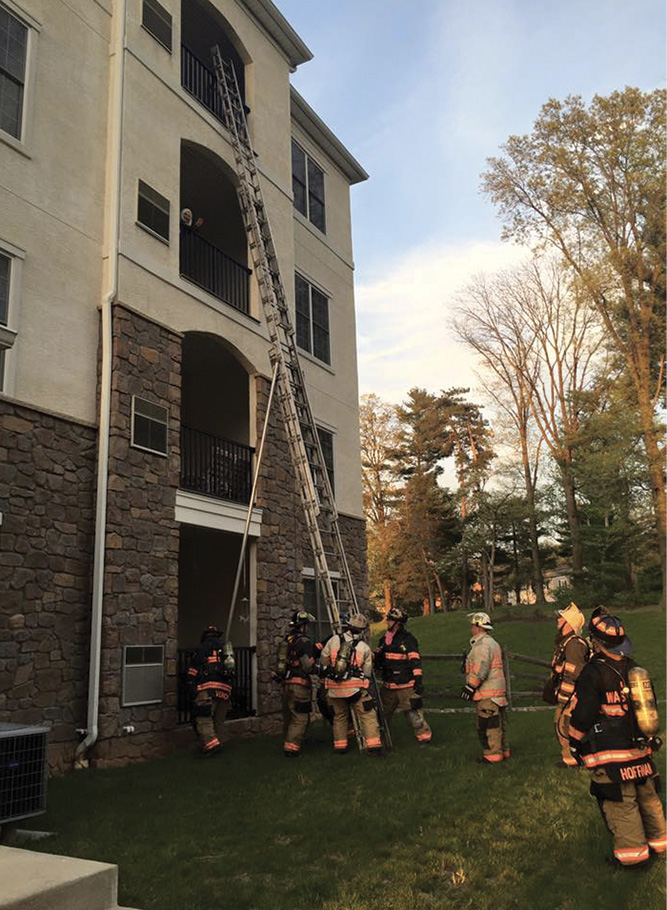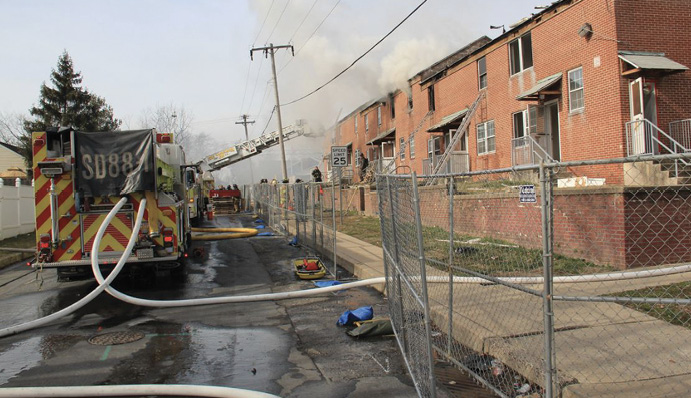VOLUNTEERS CORNER ❘ By ANDREW RATHFON and ZACH VELIVIS
Let’s begin with a disclaimer: Our organization, Fort Washington (PA) Fire Company No. 1, is by no means perfect. We are not above making mistakes on the fireground or engaging in the occasional firehouse drama. Except for one category, we are your typical suburban volunteer fire company. Where we defy the odds or buck the trend is in our numbers. We are fortunate to have a robust group of dedicated men and women during a time of decreased volunteerism across the country.
Behind the Numbers
In 2018, a study commissioned by the Pennsylvania legislature to address the volunteer firefighter shortage in the state, Pennsylvania Senate Report 6, was released. The report cited the Pennsylvania Fire and Emergency Services Institute, which declared, “The number of volunteer firefighters [in PA] has shrunk from 300,000 in the 1970s to about 60,000 in the early 2000s and to 38,000 in 2018.” Although we have put a more concerted effort into recruitment and retention, our numbers have remained steady, if not grown, over that same time period.
RELATED FIREFIGHTER TRAINING
- Three Options for Training Rookie Volunteer Members
- The Volunteer Firefighter Training Crisis—and a Solution
- Training: A Method of Risk Reduction in the Volunteer Fire Service
We are not the busiest company in the area. Last year, we ran 696 calls for service, 21 of which were working fires. Of those fires, only three occurred in our first-due area. Most of what we run are “smells and bells” responses. So, what keeps people coming down to the firehouse? What brings new people in the door? How are we able to average 38 members per drill? We believe it is, in large part, because of our approach to training.

(1) Fort Washington (PA) Fire Company No. 1 is one of the few departments in our area that still uses a 50-foot portable ladder. (Photos courtesy of Zach Velivis.)

(2) Deviant Ollam presents a respectful entry class at Upper Dublin (PA) High School. Ollam is a physical penetration tester who is normally contracted to break into buildings and advise his customers on how to improve their security. This was the first time he gave his presentation to fire service personnel.

(3) Units conduct water supply training with a focus on high gallon-per-minute flows.

(4) This row of houses was used for live fire training with the Pennsylvania State Fire Academy.
Several years ago, we gained a member with considerable experience from a neighboring department. He still lived in its first-due area but he decided to make the switch. Curious, we pulled him aside and asked him what made him leave his old place and choose our department. His answer is what prompted us to write this article: “I was tired of drills consisting of nothing more than washing trucks.” Over the next few years, more and more members began joining, citing their desire to be a part of our progressive training curriculum.
This article is meant to share training insights and strategies that have worked for our department in ways that may benefit your organization’s recruitment and retention efforts. We believe that our commitment to training, which was instilled in the current leadership by those who came before us, has played a significant role in recruiting new members and retaining the ones we have worked so hard to attract.
Our Strategy
We made the following choices to reflect our unique training ideology.
- Schedule a mix of certification instruction and nonaffiliated instructors. Although it is important that your membership obtains the basic accredited courses offered through your local academy, some of the best instruction available is through courses where no certificate is issued. There are seemingly limitless speakers in the market, many of whom provide an alternative perspective to otherwise routine topics.
- Limit the time you spend in the classroom. Get hands-on training whenever possible.
- Assign a dedicated training officer. This position, filled by our assistant chief, is responsible for scheduling training, registering members for academy classes, and securing instructors. However, all officers are responsible for brainstorming training ideas, developing lesson plans, and executing the training. The training schedule should be a standing agenda item at every line officer meeting.
- Publish the training schedule to the membership quarterly, at a minimum. Allow members to plan ahead and prioritize which drills they wish to attend. Tricking members into attending a drill night by switching plans at the last minute or announcing the drill topic when everyone is assembled does not work.
- Dedicate sufficient funds to the training budget. Although we realize this is easier said than done and that we are fortunate to have the support of our local municipality, the importance of adequate funding cannot be overstated. Think of it as an investment in your membership.
- Make funds available within your budget to send members to regional or national conferences (i.e., FDIC International). Don’t just send officers; send a mixture of members. In our experience, these members have brought back valuable recommendations for speakers and training ideas.
- Prepare a lesson plan for each internally run drill. Distribute this lesson plan to all officers prior to the drill. Place electronic slides, supporting documents, and handouts into an online document library available only to members.
- Training should reinforce department policies and standard operating procedures. Read the applicable section to the members before the drill and reinforce afterward.
- Keep drills simple. Mastering the basics such as pulling handlines will translate into fireground success. Furthermore, tailor your drills to address the types of calls you are most likely to encounter.
- Develop a line officer training/certification standard. Set expectations for each level of advancement.
- Huddle up at the end of drill. Talk about what went right and what went wrong. Gather feedback from the membership on whether the drill was worthwhile or not.
- After the final drill of the year, have the entire membership talk about what they liked and didn’t like. Also ask what certification classes they want held and what topics the drills should focus on in the upcoming year.
- Host advanced level certification classes in-house. Pay for the instructors to come to you. Even if only a few of your members sign up for Instructor I and you must fill the rest of the class with people from mutual aid, it is a win for the organization. Members will be more inclined to take a class in a familiar setting and then travel to the nearest fire academy. Furthermore, you control the dress code. Our academy requires students to wear a Class B, which is enough to discourage some veteran members from taking advanced classes.
- Burn, burn, burn. Schedule a structural burn session at least once a quarter, and always conduct any live fire training in accordance with NFPA 1403, Standard on Live Fire Training Evolutions.
- Establish a social media committee. Use these platforms as an opportunity to tout your training curriculum and advertise your department as a whole. This will develop an invaluable sense of pride in your organization. Your members are aware of what other departments are doing. They are also proud to be a part of something special and unique. Let them share their hard work and dedication in training online.
- Develop training videos. Show these to new firefighters to cover simple topics such as connecting to a hydrant.
- Push the envelope. We approached our local fire academy about the possibility of conducting a live burn in an acquired structure. When we were told that it could not support such an endeavor, we went to the state fire academy, which sent in instructors from all over the state. In February 2020, we conducted the first live fire acquired structural burn in our county in approximately 20 years.
Last, and probably most important, is that leadership, both operational and administrative, must have an open mind and be willing to try new things. We have a different philosophy in our department: If your reason for doing something is because “that’s the way we have always done it,” your opinion will fall on deaf ears.
ANDREW RATHFON is the chief of Fort Washington (PA) Fire Company No. 1.
ZACH VELIVIS is the assistant chief/training officer for Fort Washington (PA) Fire Company No. 1.

